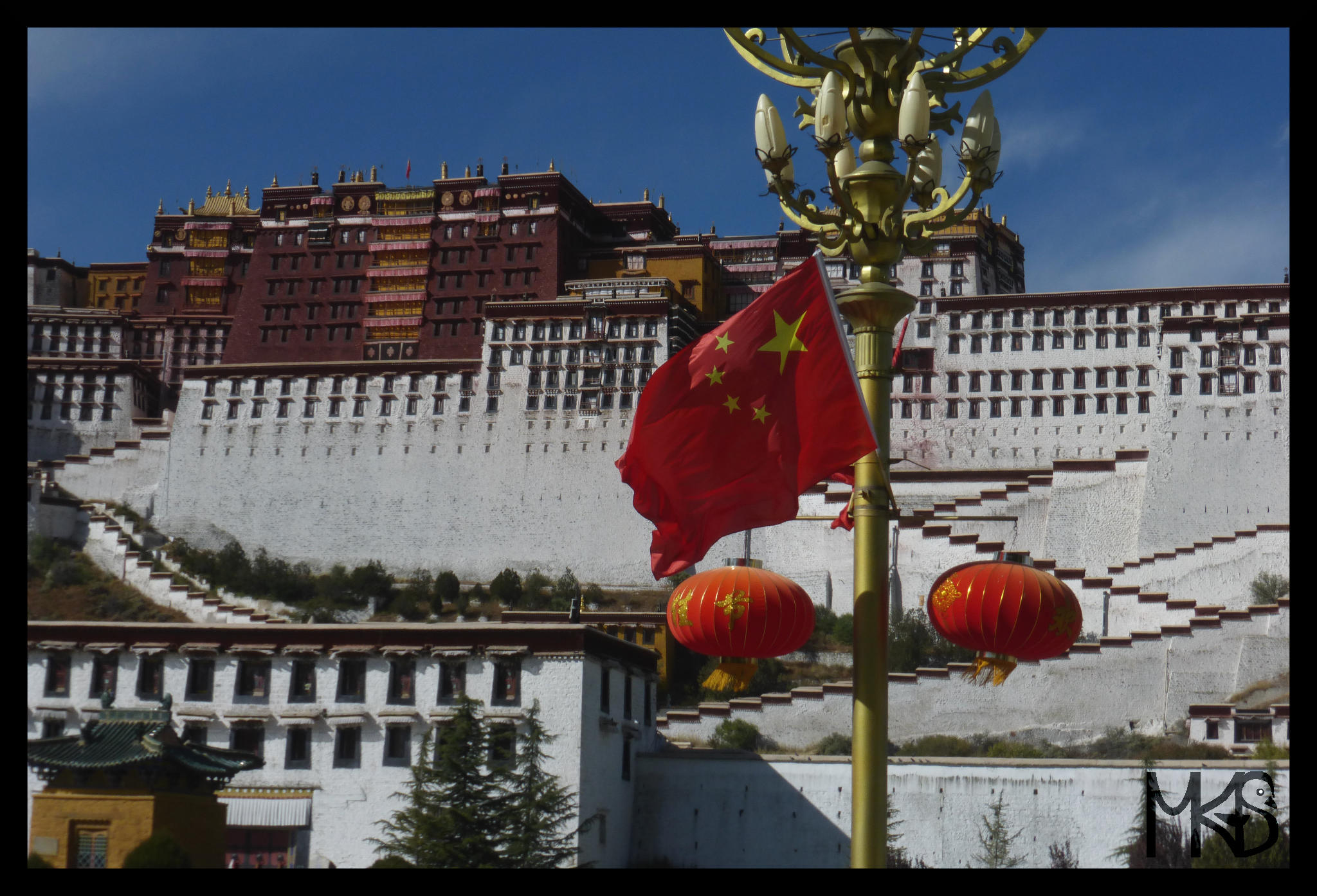
Today a few basic information about Tibet.
Tibet is a region on the Tibetan Plateau in Asia, and homeland of the Tibetan people. Technically, it’s called the Tibet Autonomous Region (TAR) or Xizang Autonomous Region and it’s a province-level autonomous region of the People’s Republic of China (PRC).
However, the reality is totally different, there is rather oppression… Moreover, when I was in China or Taiwan, I saw slogans showing hatred to Tibet and its culture. That’s all very sad… I won’t say more about political situation, just in later posts describe the real life of the Tibetan people. If you want to learn more about Tibet, it’s not difficult to find uncensured and “unrectified” information in the internet.
__________________________________________________________
Dzisiaj kilka podstawowych informacji na temat Tybetu.
Tybet to kraina w Azji, położona na Wyżynie Tybetańskiej. Obecnie Tybetem nazywa się Tybetański Region Autonomiczny Chińskiej Republiki Ludowej. Jednak ta nazwa nie ma zbyt wiele wspólnego z rzeczywistością, a zamiast autonomii jest raczej opresja… Co więcej, kiedy byłam w Chinach czy na Tajwanie, to widziałam hasła głoszące nienawiść do Tybetu i jego kultury. To wszystko jest bardzo smutne… Nie chcę tutaj opisywać sytuacji politycznej, jednak w kolejnych postach przedstawię Wam jak wygląda życie Tybetańczyków. Jeżeli chcecie zaczerpnąć więcej informacji, w internecie bez problemu znajdziecie wiele wiarygodnych źródeł.
Un popolo non libero, ma oppresso. Che peccato tutto questo, è triste quando le persone non possono godere della propria libertà.
Saluti, Patrizia
that’s so sadly true…
curious, how often have you been to China and Taiwan? Is this your first trip to Tibet?
I was in China 3 times, and once in Taiwan, also once in Tibet.
It’s actually interesting because China and Taiwan kind of hate each others, but apparently they both hate Tibet. Hopefully not all the people are like that…
Excellent post !
Thanks! 🙂
I am really curious to know more about the simple Tibeten people. Thanks for your all your information. Martina
Thank you for visiting! 🙂
Have a nice weekend!
Beautiful image.
Thank you! 🙂
I must admit to being conflicted about the political situation – i.e. should I have visited at all?
I also had doubts, wanted to write about it in another post. Of course by visiting Tibet, still lots of money goes not to the Tibetan people. On the other hand, by going to Tibet, we can still somehow help them, at least by spreading the truth.
It’s a difficult one. I see your point, but can also see the point of the Free Tibet movement which would want us to boycott it. The poverty of the Tibetans appalled me, it looked such a hard life. I’m glad I went, but won’t go again.
With some places, once is enough.
Zeer interessant en verschrikkelijk als mensen onderdrukt worden.
Thank you! 🙂
Przepiękne zdjęcie. Z przyjemnością poczytam więcej na temat Twoich doświadczeń i życia w Tybecie.
Dziękuję i serdecznie zapraszam! 🙂
Tybet jest magiczny… Czytałam książki Dalajlamy “Sztuka szczęścia” i “Sztuka szczęścia w pracy”, nie opisują bezpośrednio życia Tybetańczyków, ale nawiązują do ich sytuacji i tego, jak odnajdują swoje szczęście mimo represji władz, mimo niszczenia ich kultury, wiary, tradycji.
Piękne zdjęcie! 🙂
Dziękuję!
To prawda, bardzo niesprawiedliwa jest ich sytuacja, i obawiam się że z czasem będzie tylko gorzej 🙁
Merci infiniment de cette magnifique photo tout comme le texte 🙂
Thank you! 🙂
Pravda je věc relativní a objektivně ji lze poznat, jen vlastní zkušeností.
Nevěřím všemu, co kdo-kde píše, dokud se tam nepodívám a neuvidím na vlastní oči, potom budu posuzovat, jestli je jim hůře, nebo lépe, nežli když byli svobodní? Číst o něčem, je málo.
When your government tries to convince you that something happened, while it didn’t, that’s wrong…
Now I write in this blog : https://quandolamentesisveste.wordpress.com/
Sempre splendide le tue foto, un saluto,silvia
Thanks! 🙂
meglio sorvolare sulle cose politiche in Tibet, mi fanno troppo arrabbiare!
ps la foto è splendida!
Thank you!
No właśnie ta chińska flaga powstrzymuje mnie przed odwiedzeniem Tybetu 🙁 Od zawsze był moim marzeniem, ale mam opór przed wystąpieniem o wizę do Chin. Dlatego wybieram w te jesień Nepal i podróż śladami uchodźców z Tybetu.
Nepal jest bardzo ciekawy, i tam rzeczywiscie spotkałam wielu Tybetańczyków.
Czytałam sporo o Tybecie. O jego zacofaniu i pięknej surowości. O niezwykłej kulturze i jej potwornym niszczeniu. O twardych ludziach, którzy ciągle walczą tam o przetrwanie. Chętnie poznam też Twoje wrażenia 🙂
Ubrałaś to w idealne słowa!
O Tybecie czytałam, także o sytuacji politycznej. Nie były to opinie bezpośredniego podróżującego, który styka się z miejscowymi ludźmi i obserwuje codzienne życie. Czekam na zdjęcia obrazujące ten kawałek egzotyki.
Serdeczności zasyłam.
Dziękuję i serdecznie zapraszam! 🙂
I know little about the political situation in Tibet, but you have made me want to find out. It seems odd that China and Taiwan should be united in their hatred of Tibet.
That’s so true! I believe not all people are like that, but still some…
Bardzo chętnie poczytam u Ciebie o Tybecie, ach żal tych ludzi i zawsze zastanawiam się dlaczego tak jest na tym świecie?:(
to prawda, strasznie neisprawiedliwe…
A must see in Tibet, right. Did you get to climb the 300 steps to get to the top. The view must be fantastic, huh? Hope I can make it with my knee and lower back problems?
it is! 🙂
You can make it, don’t worry! Just take it easy, and walk a few times slower than at home, because of high altitude!
I’ve just read through all of your Tibet posts to date. I’ve been there twice and think the value of a visit is not only to see this astonishing country but to come home and spread the word about what the Tibetans are going through.
That’s so true, as Dalai Lama said!